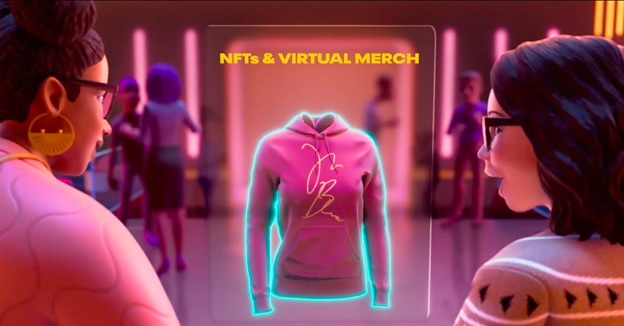The Metaverse and Web 3.0 will cause a lot of disruption across different industrial sectors. This will also happen in the global fashion industry scaled as a billion-dollar industry. It is no news that the world is taking a paradigm shift into the digital era from the physical world. Likewise, design in the traditional fashion industry can become digital wearables that participants can use in augmented reality (AR) and real life.
There is a proposition about the digital fashion non-fungible tokens (NFTs) industry becoming the most significant NFT portion of Web 3.0. This proposition holds that it will outrun the NFT-based gaming industry, believing that nearly every member of the population contributes to the fashion industry.
As a part of this proposition, it will cut across different digital industrial sectors because the digital fashion NFTs contain accessories, clothing, jewelry, shoes, and other items that gamers can endow their avatars virtually in the gaming ecosystems. As a result, digital wearables are invested in decentralized games while being used as adornment in augmented reality.
Due to how large the digital fashion NFTs are maximized, digital wearable fashion will significantly interact in the next two years. An example demonstrates how users can now wear virtual accessories while conducting video interviews and earn NFTs due to these activities.
The Existence of Wear-to-earn Models in the Fashion Industry
As a part of innovative growth in the fashion industry, brands, designers, and retailers will work collectively to accommodate “wear-to-earn” models that will help their businesses to thrive in creating their digital closets. In addition to this, brands and designers will pay incentives to consumers who wear their virtual items. This helps foster long-term relationships with their consumers.

This incentive system might include crypto compensation, exclusive access to wearable items, delivering fashion pieces to their digital wallets via airdropping or compensating them with fungible tokens. An instance is the soon-to-be-launched NFT drop by Dolce & Gabbana (D&G) for its community on the UNXD curated marketplace, “D&G Family.”
Consumers will have exclusive access to apparel made available via the drop. Dolce & Gabbana launched an NFT collection named “Collezione Genesi” to establish how powerful Metaverse wearables are. Although UNXD might be the leading luxury platform offering wear-to-earn NFT features, some NFTs ecosystems already adopt the concept. An instance is the Davaproject.
Davaproject is an NFT project creating about 10,000 avatars NFTs known as “Dava.” Users will mint these NFTs with about 30,000 wearable items, and the scarcity of the items depends on the decision of Davaproject and rank differently across the user dashboard.
As an owner of these avatars and wearables, you can receive benefits such as exclusive invites to events involving community participation, giveaways, and NFT airdrops and obtaining new items from drops for wearing those items.
The rise of virtual wearables might result in a bullish call on the digital fashion industry. This may result in a pump in the crypto market due to global adoption across the fashion industry. Fashion and innovation are sisters in the movement global fashion industry. Thus, brands and organizations need to embrace the Metaverse and venture into it because it will breed future virtual artists and designers.
Aside from the fact that digital fashion will cause disruption in the Metaverse, it is crucial to examine how virtual wearables will help improve sustainability through a post-waste economy. That’s because these wearables are the best replacement for 40% of closets that individuals do not wear. It is an eco-friendly replacement.
In addition to the points referenced above, virtual fashion shows are more accessible and sustainable than their physical version. This includes hosting on the Metaverse and incorporating the NFT versions of those material items. As a result, audience participants can check out their avatars from different angles on the virtual runway.
How Digital Wearables will Translate in the Future
Although the concept of digital fashion is in its infant stage, it is evident that the wear-to-earn system will be more significant than the play-to-earn industry. That’s due to its capacity to cut across different sectors in the blockchain ecosystem and how its reward model can play out on humanity and sustainability.
This argument bases on a proposition that the wear-to-earn model will attract mainstream attention beyond the gamers’ community. Notably, women will be the more significant population interested in this model. Soon, we will see blockchain companies creating virtual closets that model digital wallets. This will help onboard more users to the blockchain environment.
Regardless of how innovative this may sound; it is noteworthy to reference how the gaming industry is the inspiration for creating digital wearables. These online games created a new economy for the fashion industry.
The exciting part of this innovation is how it rewards users for wearing certain items for long on their avatars. Likewise, this development is not aimed at gamers instead. It is aimed at society and looking to establish a new market in the fashion industry. The intersection of the Metaverse and Web 3.0 is birthing a wear-to-earn digital fashion world.



